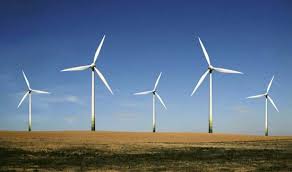Wind power is set to lead Australia’s renewable energy growth for the next half-decade, rising by more than 5GW from 2012-18, and undercutting new-build fossil fuel generation on cost, according to the latest energy market report from the International Energy Agency.
Overall, Australia’s renewable energy capacity is expected to rise from 14.6GW in 2012 to 25.9GW in 2018, driven by competitive onshore wind and rising economic attractiveness for distributed solar PV, the IEA said today in its second annual Medium-Term Renewable Energy Market Report (MTREMR).
And while wind is expected to lead the charge, Australian solar PV capacity is also expected to rise significantly – by 5GW from 2012-18 – and to overtake wind in 2018 as the largest non-hydro contributor to Australia’s renewable energy generation mix.

One of the key aspects of the report is IEA’s endorsement that renewables will be more attractive on price than new fossil fuel generation. It says that Australia’s “excellent resources combined with falling renewable technology costs and rising gas prices” will see wind energy, along with bioenergy, become economically attractive versus new fossil-fuel generation.
It’s an outlook that falls in line with that of Bloomberg New Energy Finance – who in April reiterated its conclusions that wind energy is already vastly cheaper than new-build gas-fired and coal-fired generation in Australia, and large-scale solar farms will achieve a similar status by 2015/16.
The report also quotes the Australian Energy Technology Assessment 2012 (AETA) from the Bureau of Resources and Energy Economics, which found that the levelised cost of electricity (LCOE) for onshore wind comparable to combined-cycle gas turbines (CCGT) and lower than coal when carbon pricing was included.
“Onshore wind development is expected to be driven by attractive economics and the completion of major projects currently under development, including the 420MW Macarthur wind farm, the 168MW Musselroe wind farm and the 165.5MW Gullen Range project,” the report says.
It also points to the “quite large” pipeline of further permitted (∼4GW) and announced wind projects (∼11 GW), though it notes that much of this capacity is not likely to come on line over the medium term.
On solar, the IEA says most of the expected 5GW of growth will come via rooftops – the small-scale, distributed market – with some off-grid additions. It points to last year’s commissioning of Australia’s first large-scale solar PV plant (10 MW), and plans for larger such plants to come on line over the medium term.
As we have mentioned, this growth would put solar PV just ahead of wind energy in Australia’s non-hydro renewables mix. But under the IEA’s “enhanced case” scenario, solar PV capacity would be a good deal further ahead of wind, with another 2-3GW capacity predicted, versus the baseline case in 2018. According to the report, this “enhanced deployment” could occur with faster improvements in competiveness for large-scale solar PV, as well as a faster-than-expected uptake of small-scale solar PV capacity.
The outlook for CSP is “less robust,” says the report, thanks to the suspension of the 250MW Solar Dawn project in 2012 and the relatively lower prices of solar PV. Still, some CSP growth is expected – up to 0.4GW by 2018 in the baseline scenario, or add another 0.5-1.0GW in the enhanced case scenario – including the Kogan Creek Solar Boost project integrating solar thermal generation with a coal-fired plant.
“The large-scale solar additions could also be supported by an assurance of timely grid connections. Under these conditions,” the IEA says.
On costs, the report finds that utility-scale solar PV and CSP remain more expensive than new fossil-fuel generation, but says this discrepancy should be corrected by the end of the decade, citing analysis from both AETA and BNEF that shows LCOEs for best-in-class projects approaching (for CSP) or surpassing (for solar PV) mid-range LCOEs for new fossil builds with carbon pricing by 2020.
Bioenergy capacity is expected to grow moderately over the medium term, with development dependent on feedstock availability and supply chains. Geothermal and ocean energy should expand slowly from a low base, says the report, with several demonstration-scale projects as well as a 19MW commercial-scale ocean plant are under development.










